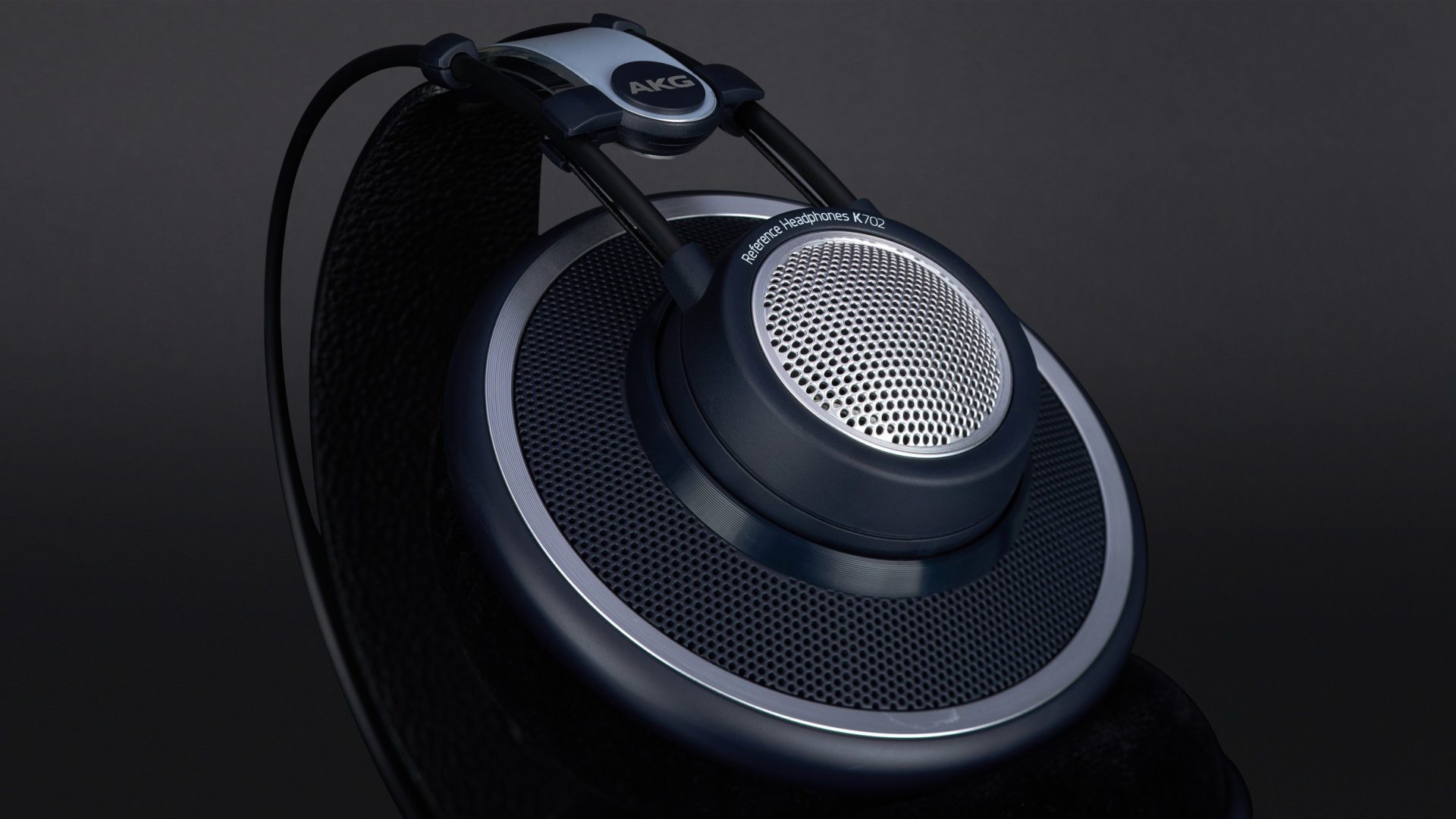In addition to the quality levels of workmanship and eye-catching aesthetics, the AKG K702 really convinces with its wearing comfort and pleasant handling properties. Last but not least, the crystal-clear sound will make it hard for studio users and hi-fi fans to switch to another model once they’ve added the K702 to their audiophile assortment..
With the K702, AKG adds a studio headphone heavyweight to its portfolio, with precise sound reproduction for mixing and mastering applications.

What’s Included?
The K702 impresses from the off, with its packaging featuring an elegant folding design that presents the headphones beautifully. A cable and jack-mini jack adapter are presented alongside the headphones themselves.
Aesthetics
At first glance, these headphones seem a little sinister in their appearance. I mean this in a positive sense, by the way. The matt black finish of its earpieces, the black velour padding and black leather accents, and silver plastic elements combine for a piece of hardware that wouldn’t look out of place in a Mad Max movie.
Materials
AKG utilises plastic components rather than metal ones for the most part throughout its construction. This is accented by other quality materials, such as 3 mm thick leather, for a slick outer aesthetic that feels great to the touch. The matt black cable offers good grip performance, with a tangle-free design to ensure no hassle when listening on the go. The cable itself is securely attached to the headphones via a mini XLR plug.
Handling
The replaceable velour ear cushions really boost the wearing comfort here, with a soft texture that feels great against the ears themselves. The flexible suspension of the headband also ensures an optimum fit, with the headphones easily accommodating all manner of head shapes and sizes. The model that I tested has a flat bottom, reminiscent of the more expensive Anniversary version. Once on, you’ll be relieved to know that contact pressure is very low with these headphones, with no discomfort evident during long listening sessions.
Sound
As far as I’m concerned, the sound performance of the K702 is fantastic. The stereo image is pleasantly wide, with convincing signal dynamics and depth gradation. However, the extremely linear frequency response range means these headphones aren’t going to impress lovers of loud volumes and big bass changes. In fact, they’re very discreet in the bass ranges, although they also allow for a delicate and differentiated assessment in the lower bass ranges. The midrange is handled well enough, with linear reproduction. High frequencies, even at the extreme end, are reproduced in stunning detail. Transients are also reproduced with finesse. All in all, the K702 sounds composed, if a little cool. That being said, you can’t really criticise these headphones for reproducing sounds in a more realistic manner.
Areas of Application
Due to its tonal properties, it’s difficult to decide which genres are best suited to playback on the K702. With studio, rock and metal genres, listeners can benefit from the impressive transient richness. With pop, dance and urban music, the differentiated detail at lower frequencies comes into play. A linear midrange and good treble reproduction offers a simplified sound when listening to acoustic genres, such as jazz or classical.
The K702 is ideal for mixing applications, making them an ideal consideration for those after something to use at home or in the studio. Alternatively, the everyday listener will find plenty to enjoy thanks to quality signal analysis and impressive sound reproduction.
Technical specifications
- Ear couplingOver-ear
- Typeopen
- Frequency response (headphones)10 - 39.800 Hz
- Impedance60,65 ohms
- Sound pressure level (SPL)87,76 dB
- Pressure averaged from big and small head604,5 g
- Weight with cable362 g
- Weight without cable300 g
- Cable length300 cm
What's in the box
- 6.35 mm stereo jack
















































Could you explain a bit on the headphone amplifier? The monitor one headphone output impedance is 20ohm and K702 is 62ohms, so the Monitor One output does not fall under the 1/8 rule. Why does it still sound good though?